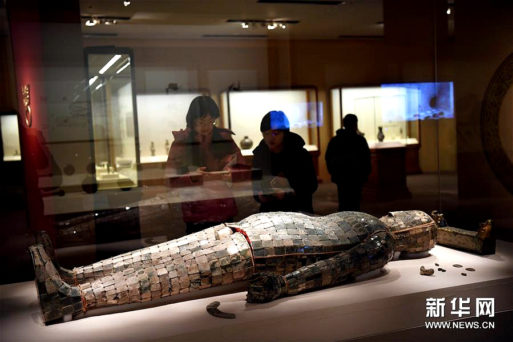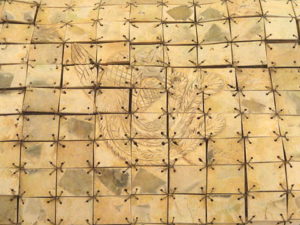
“I look handsome, I look smart.
I am a walking work of art.
Such a dazzling coat of many colors. . .”
So says Joseph in the musical, “Joseph and the Amazing Technicolor Dreamcoat.” Those lines about making a fashion statement came to mind when I read about the fabulous jade burial suits found in China.
The Stuff of Myth and Legend
Written Chinese records describe jade burial suits as early as 320 A.D., but for thousands of years, there was no proof of their existence. Eventually, the famed jade ensembles became the stuff of myth and legend. Then in 1968, a tomb was discovered in a remote location of Hebei Province, China. Cloistered behind an iron wall, two brick walls, and a corridor packed with stone, the tomb contained two priceless examples of jade burial suits. Made for Prince Liu Sheng and his wife, Princess Dou Wan of the Han Dynasty, these artifacts proved that jade funeral garb was not a myth, but reality.
If you’re wealthy, you can be buried in anything you want. The royalty of ancient China chose to have tailored body suits made of jade. Jade was thought to derive energy from the natural world and preserve bodies while fighting off evil spirits.

Credit: George Walter Vincent Smith
Art Museum
Jade burial suits are made out of thousands of small pieces of jade. Each piece has holes drilled in the corners. The kind of thread used to tie the jade plates together varied depending on the rank of the person being fitted. Emperors owned the exclusive privilege of using gold thread. (The stone shroud of Liu Sheng was stitched together with more than 1100 grams of gold wire. Putting this into modern equivalents, that means that 2.425 pounds of gold thread were used at a current value of more than $51,000.)
Silver thread was used for princes and princesses, copper wire and silk threads were used for upper nobility.
Precious and Few
Jade suits were extremely rare and valuable, a luxury funeral item available only to the extremely wealthy. In addition to the cost of the materials, the process to create a stone garment to fit a specific person was labor-intensive. It took about a decade for each suit to be completed.
Another reason for the rarity of these objects is that the Emperor Wen of Wei stopped production of the suits in A.D. 223 because tomb raiders would loot tombs and burn the suits in order to recover the gold thread.
Since 1968, 20 jade burial suits have been discovered, all from the Han Dynasty, which existed from 206 B.C. to A.D. 220. An instruction manual is found in the Book of Later Han which explains the rules for the creation of the jade burial suits.
Joseph may have boasted about how good he looked in a coat of many colors, but he didn’t have anything on those ancient Chinese royals who wore the Imperial gemstone of their country in a luxurious kind of pajama for the afterlife.

Credit: Sohma via Flickr
“I look handsome. I look green
Wearing the finest jade you’ve ever seen,
In my gold-stitched, custom-fitted garment…”
These breathtakingly beautiful, (no pun intended) burial suits are on display at several museums throughout China. An exhibition entitled “Splendors of Great Han” at the National Museum of China in Beijing opened on December 28th, 2018, and runs through March 28, 2019.

 Jade Burial Suits on Display at the National Museum of China
Jade Burial Suits on Display at the National Museum of China



 How to Comfort A Dying Loved One
How to Comfort A Dying Loved One
 Our Annual Seven Holiday Gifts for Someone Who Is Grieving, 2024 Edition
Our Annual Seven Holiday Gifts for Someone Who Is Grieving, 2024 Edition














